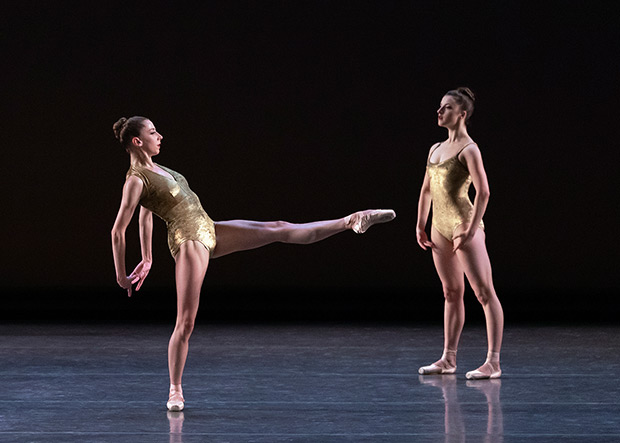
© Erin Baiano. (Click image for larger version)
New York City Ballet
Spring Gala: Bright, Bartók Ballet, Tchaikovsky Suite No. 3
★★★✰✰
New York, David H. Koch Theater
3 May 2019
www.nycballet.com
davidhkochtheater.com
New Beginnings
As the spring gala began at New York City Ballet this week, Wendy Whelan and Jonathan Stafford, the company’s new directorial team, emerged onstage arm in arm to greet the audience. It was good to see Whelan back in this theatre where she put her stamp on innumerable roles over her 30 year career. The two made gracious, and thankfully brief remarks, reasserting their devotion to the company’s core repertory of ballets by Balanchine and Jerome Robbins, and promising to expand the pool and range of choreographers who will be invited to make new works. No mention was made of recent troubles; a page has been turned.
An openness to the new is crucial at any company, but it can’t guarantee success, no matter how careful the selection process may be. Bold choices can leave the audience as un-fulfilled as safe ones, if the results fail to inspire. And that was more or less the impression left by the evening’s centerpiece, a new ballet by the now very busy experimental choreographer Pam Tanowitz. Her Bartók Ballet is set to Béla Bartók’s fifth string quartet, a dissonant and sprawling piece that would benefit from closer listening, played here by the FLUX Quartet. Challenging and intelligent in every detail, the dance fails to cohere as a whole.

© Erin Baiano. (Click image for larger version)
Tanowitz is a knowledgeable and lucid maker of steps. Her great talent seems to be a capacity to play with, quote, recombine and transform whatever dance vocabulary she is using. A few weeks ago the Martha Graham Dance Company premièred a Tanowitz work that applied a similar process to images and poses gleaned from the Graham repertory. Like Merce Cunningham, an obvious source of inspiration, she captures and subverts the logic of choreography. But what she lacks so far, and which Cunningham had in spades, is a sense of the inner tension and drama that makes us want to follow a dance from beginning to end. Cunningham quietly challenged the viewer to find or imagine a logic within his mysterious works. Tanowitz’s dance remains a collection of segments.
In Bartók Ballet, which coexists but does not comment on the music, the dancers explore a huge range of steps and quotations: a repeated mazurka step, an image from Balanchine’s Four Temperaments, giant battements that smack the floor, sideways creeps on heels and toes, sliding and rolling on the floor. The dancers execute them alone or in groups; often there are five or six things going on at once, facing every which way. A woman grabs a man’s arm and assists him in a pirouette, then guides him offstage. But the ingeniousness is offered up objectively, like a series of experiments. The handsome gold-colored costumes, by the design duo Reid and Harriet (who also dressed the first ballet of the evening) are the most vivid, playful element in the dance, which felt longer than its thirty minutes.

© Erin Baiano. (Click image for larger version)
Justin Peck provided the opening ballet, Bright, a reworking of his earlier pas de deux The Bright Motion. The short piece for three couples, led by Sara Mearns and Russell Janzen, is elegant and bright, bathed in flattering hues by the lighting designer Brandon Stirling Baker. But it does nothing to dispel the feeling that Peck is stuck in a rut, creating attractive, pleasant ballets to atmospheric but fundamentally formless music by pop-infused contemporary composers. (In this case, Mark Dancigers’s The Bright Motion II, orchestrated for New York City Ballet.) Here as always, Peck creates images of striking loveliness, like a series of arabesques followed by a slow lifting of the arms. His partnering is quick and bright, more a give and take than a portal into a realm of heightened emotion. At the end, Mearns and Janzen, simply separated and walked off in different directions, with one final look. Like the ballet, the gesture feels flippant.
Thanks, then, to Balanchine, for the final entry of the evening, Theme and Variations, a ballet that never fails to impress with its crystalline logic, sumptuous score, and powerful sense of momentum. This was certainly not a performance for the ages, and it is a shame that this season Theme is not being performed on its own, but as part of the over-long and repetitive Tchaikovsky Suite No. 3. (So much running! So much hair!). But it was good to see Megan Fairchild back in form as the lead ballerina in Theme, particularly in the quick, bright sections, where she has lost none of her sparkle.
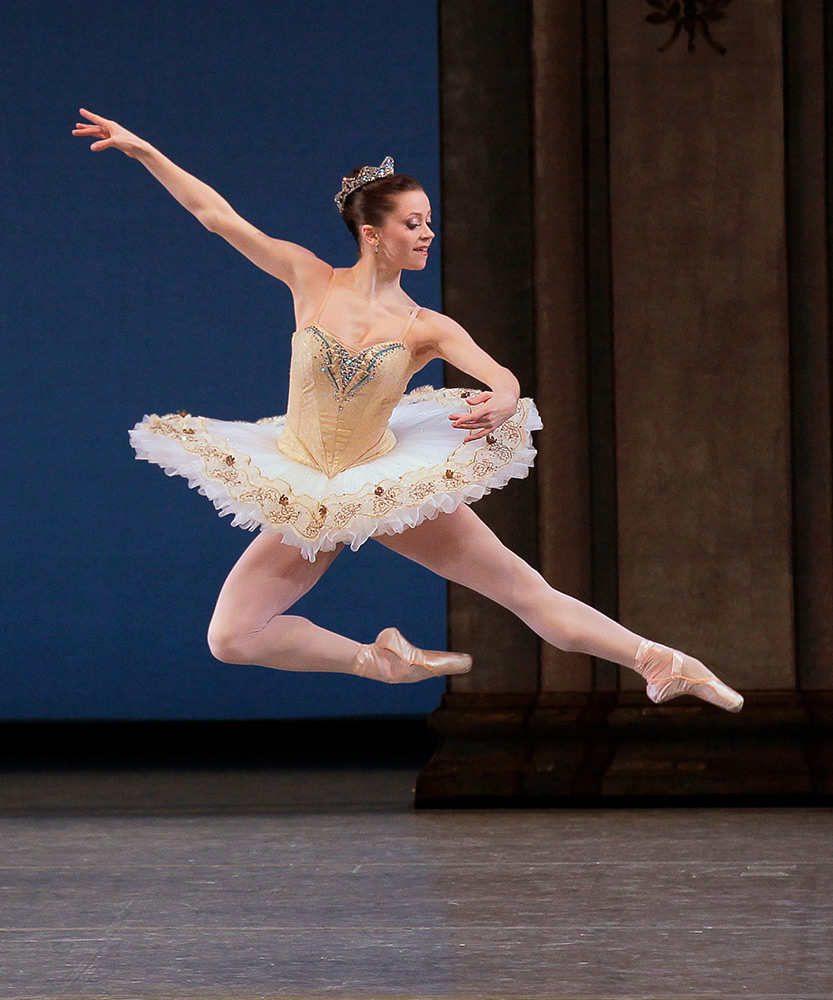
© Paul Kolnik. (Click image for larger version)
What do the two new ballets have to tell us about the next chapter at City Ballet? We’ll have to see. Pam Tanowitz is making another work for the company next year; maybe now that she knows the dancers better she’ll find more of a groove. The dancers are always a highlight, particularly in new work, where they look eager and committed. And there’s always Balanchine.












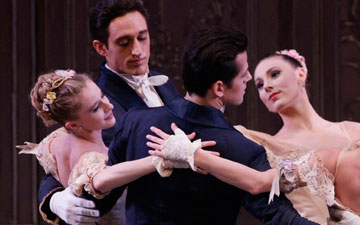
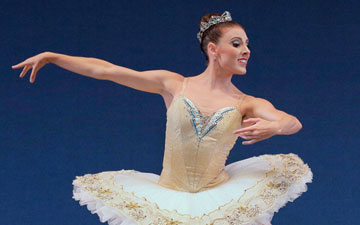
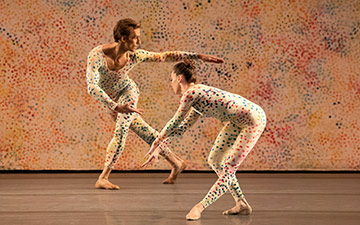

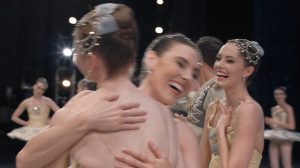
You must be logged in to post a comment.